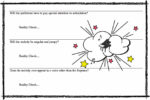Vintage PA: Learning In Style
 While updating Piano Addict one morning in July of 2010, I ran across an article on why intelligent people fail. Many of the characteristics for failure rang a bell for me. That article is no longer available but this one details many of the same reasons for failure. I prefer my glass half full so let’s look a little at Learning Styles and how to help intelligent people succeed. I’ll give an overview in this post and then write a series of more detailed posts on each of the style pairs as they relate to piano teaching and learning.
While updating Piano Addict one morning in July of 2010, I ran across an article on why intelligent people fail. Many of the characteristics for failure rang a bell for me. That article is no longer available but this one details many of the same reasons for failure. I prefer my glass half full so let’s look a little at Learning Styles and how to help intelligent people succeed. I’ll give an overview in this post and then write a series of more detailed posts on each of the style pairs as they relate to piano teaching and learning.
It is generally accepted that how helpful a learning situation is to a person varies with the individual learning style of that particular person. We need to look at choosing appropriate presentations of material for each student’s individual perspective. We also need to be aware of our own learning preferences as teachers to avoid one trick teacher syndrome. One way of examining our individual approaches to learning and teaching is through investigating the characteristics of “Learning Styles”.
Historically, many have studied the characteristics of humans and how they think and learn. Over 30 published learning style inventories have been identified as widely used by experts. I find the four paired sets of style characteristics set forth by Isabel Myers-Briggs particularly helpful. I recognize present and past students and myself within them.
These paired characteristics can help us understand learners’ preferences for perceiving, expressing values and commitment, and interrelating with the world in general. Ideally, the two traits comprising each pair are balanced fairly equally within us. However, the world is rarely ideal. Most people show a preference for either one half or the other of each pair of characteristics. The four pairs are:
• Introversion – Extraversion
• Intuition – Sensing
• Thinking – Feeling
• Perceiving – Judging
The characteristics of Introversion and Extroversion refer to how we gather energy from or “deal with” the world around us. Introverts find energy in ideas – from inside. Extraverts find energy in people and objects – from outside. The characteristics of Intuition and Sensing refer to how we gather information to make sense or “take in” the world. Intuitives find patterns and relationships in facts. Sensers trust and depend on those facts.
The characteristics of thinking and feeling refer to how we evaluate or “size up” our world. Thinkers value logic, principle and objectivity whereas Feelers value harmony, human needs and facilitation. The characteristics of judging and perceiving refer to our actions as we organize or “sort out” our world. Judgers make quick decisions and consider deadlines to be sacred. Perceivers are adaptable, flexible and seek information to infinity and beyond.
Critics have said that there are no such things as learning style preferences; that researchers are reading more into behavior than there actually is. Years of experience have lead me to believe otherwise. By considering these characteristics when we work with students, plan lesson activities and choose methods and materials, we assure students that we care about them as individuals.
This certainly does not mean that we expect any less excellence or excuse sloppiness (in the case of an intuitive) or arrogance (in the case of a judger). It merely means that we teach to modify the characteristics that are the causes of the sloppiness or arrogance. This, in turn, builds trust and contributes to a happier learner and a more balanced individual. Perhaps, in the final analysis, that is what matters most.



I have been playing the piano for quite some years now, and I have seen other people learn to play the piano. The argument that people have different learning systems is very true. If the teaching style is correctly adapted to the learning style of each student, the learning process is greatly enhanced.
I think drive and determination are 2 assets that all successful people have in common. As a guitar teacher I have seen some of my most talented students give up and fail to continue what would probably be a very successful career, while others with not as much talent but great drive make it. It only takes 1 day to give up on something, while it takes constant effort to become great at something, talent can only take you so far.